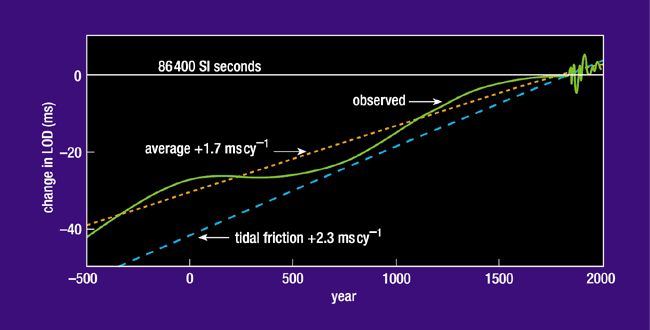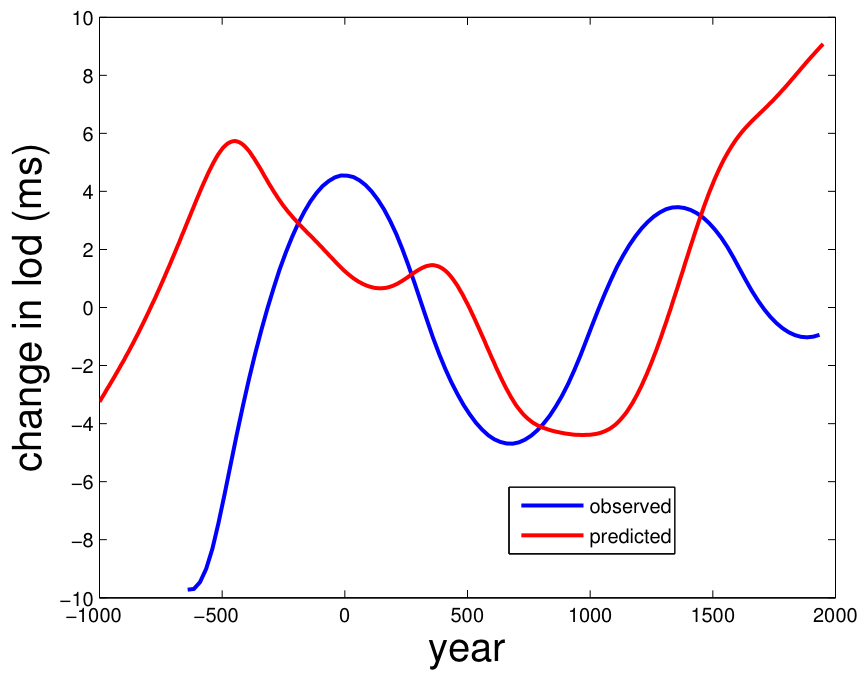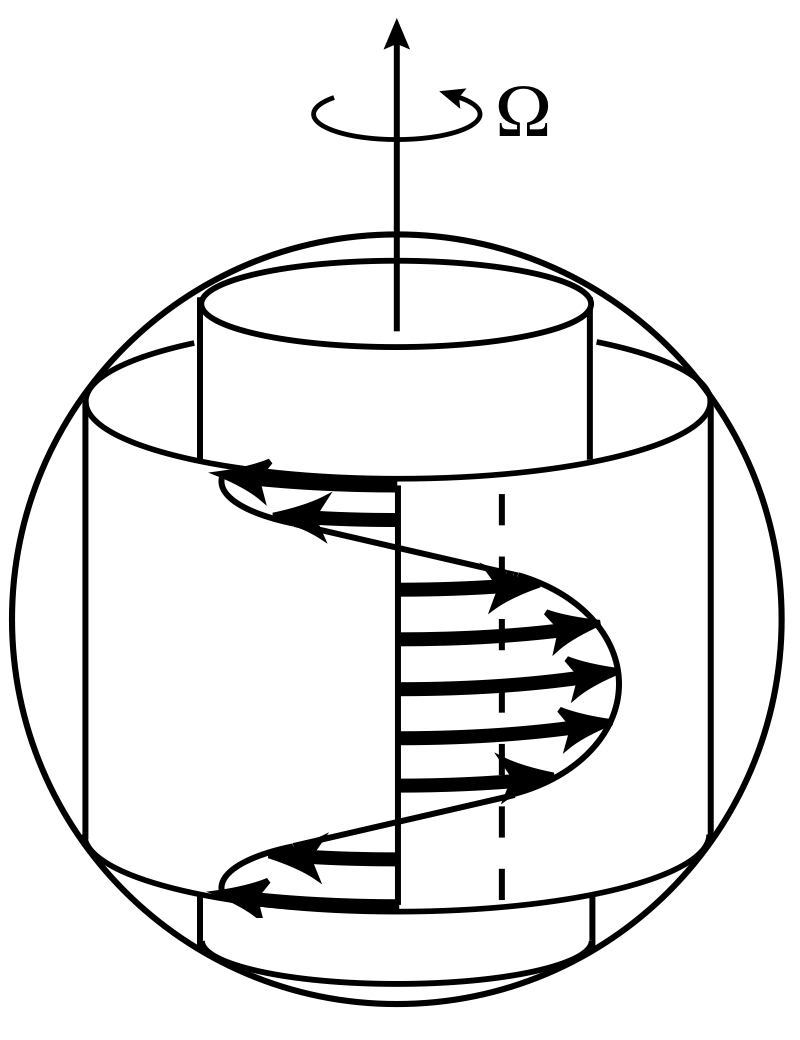Changes in length of day at millennial timescales
Variations in the length of day reconstructed from ancient records of
eclipses contains fluctuations with a milleinial timescale (Figure 1). We have good reasons to believe that this is the result of angualar momentum exchange between the core and the mantle. A part of the time-dependent variations observed in
archaeomagnetic field models consists of episodic longitudinal motions
with a similar millennial timescale variation. In a previous study, I
have shown that time-dependent azimuthal flows at the surface of the
core - connected to the motion of the high-latitude flux lobes
described here - can explain parts of the archaeomagnetic secular
variation while being also consistent with the changes in core angular
momentum required to explain such a millennial length of day signal
(Figure 2).
In contrast to decade timescales, the flows in the core are
characterized by a shear in the axial direction (Figure 3).
In a collaborative study lead by Jerry Mitrovica, we have shown recently that the length of day changes predicted on the basis of the red curve in Figure 2 are consistent with the part unaccounted for by tidal breaking and glacial isostatic adjustment to match the eclipse observations. The study further shows that the observed changes in the ellipticity of the Earth involves an important contribution due to sea-level change from ice sheet melting. Thus, to fully understand changes in sea-level from global warming, it is necessary to understand the dynamics deep inside the core of the Earth!

Figure 1: Changes in the Length of day reconstructed from Solar and Lunar eclipse data. This figure appeared in a paper by F. R. Stephenson, in Astronomy and Astrophysics, 2003. |

Figure 2: Observed (blue) vs predicted changes in the Length of day based on core flows reconstructed from millennial timescale magnetic field changes. Figure taken from Dumberry & Bloxham, GJI, 2006. |

Figure 3: Geometry of time-dependent flow inside the core typical of a thermal wind. |
Some of my papers on this topic
Dumberry, M., 2018, Earth Rotation, Excitation, Core, In: Grafarend E. (eds) Encyclopedia of Geodesy , Encyclopedia of Earth Sciences Series, Springer, Cham.
Mitrovica, J. X., Hay, C.C., Morrow, E., Kopp, R. E., Dumberry, M. and Stanley, S., 2015, Reconciling past changes in Earth's rotation with 20th century global sea-level rise: resolving Munk's enigma, Science Advances, 1, e1500679.
Dumberry, M. and Finlay, C. C., 2007, Eastward and westward drift of the Earth's magnetic field for the last three millennia, Earth Planet. Sci. Lett., 254, 146-157.
Dumberry, M. and Bloxham, J., 2006, Azimuthal flows in the Earth's core and changes in the length of day at millennial timescales, Geophys. J. Int., 165, 32-46.

